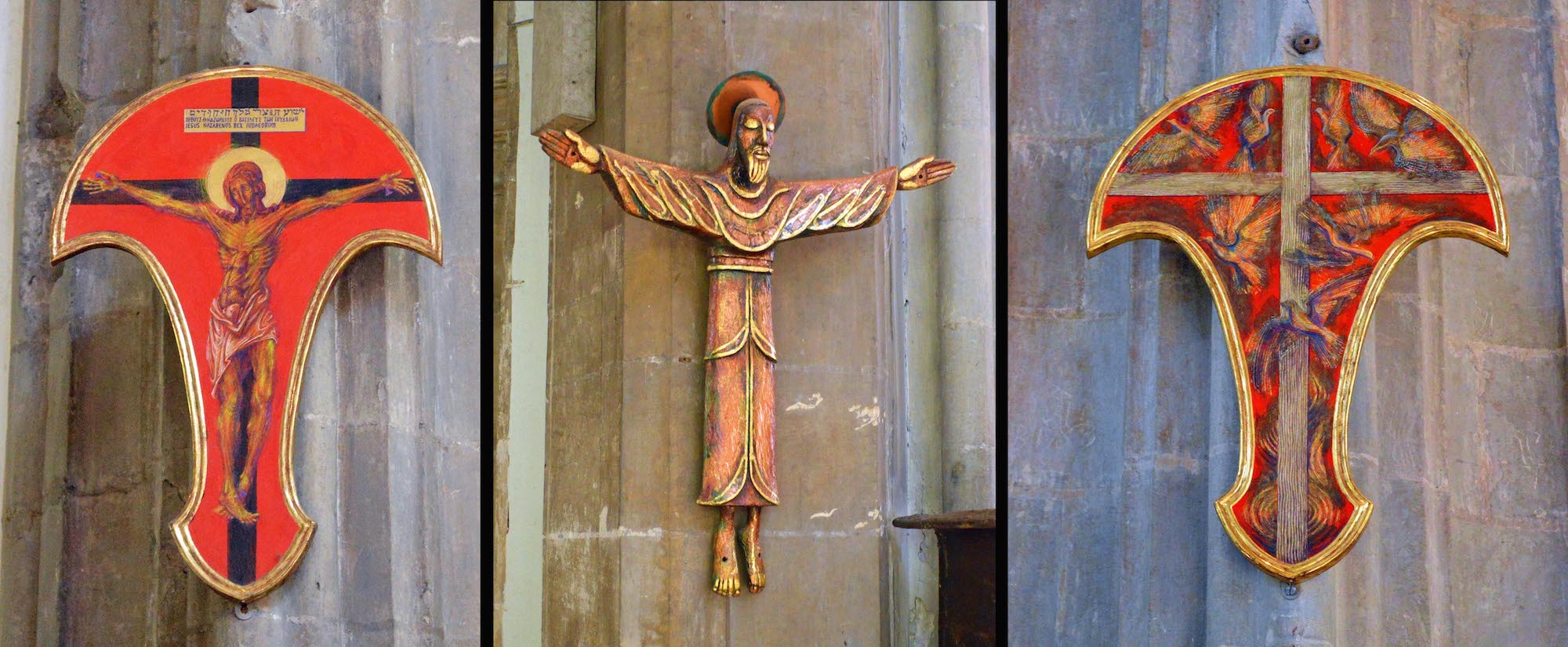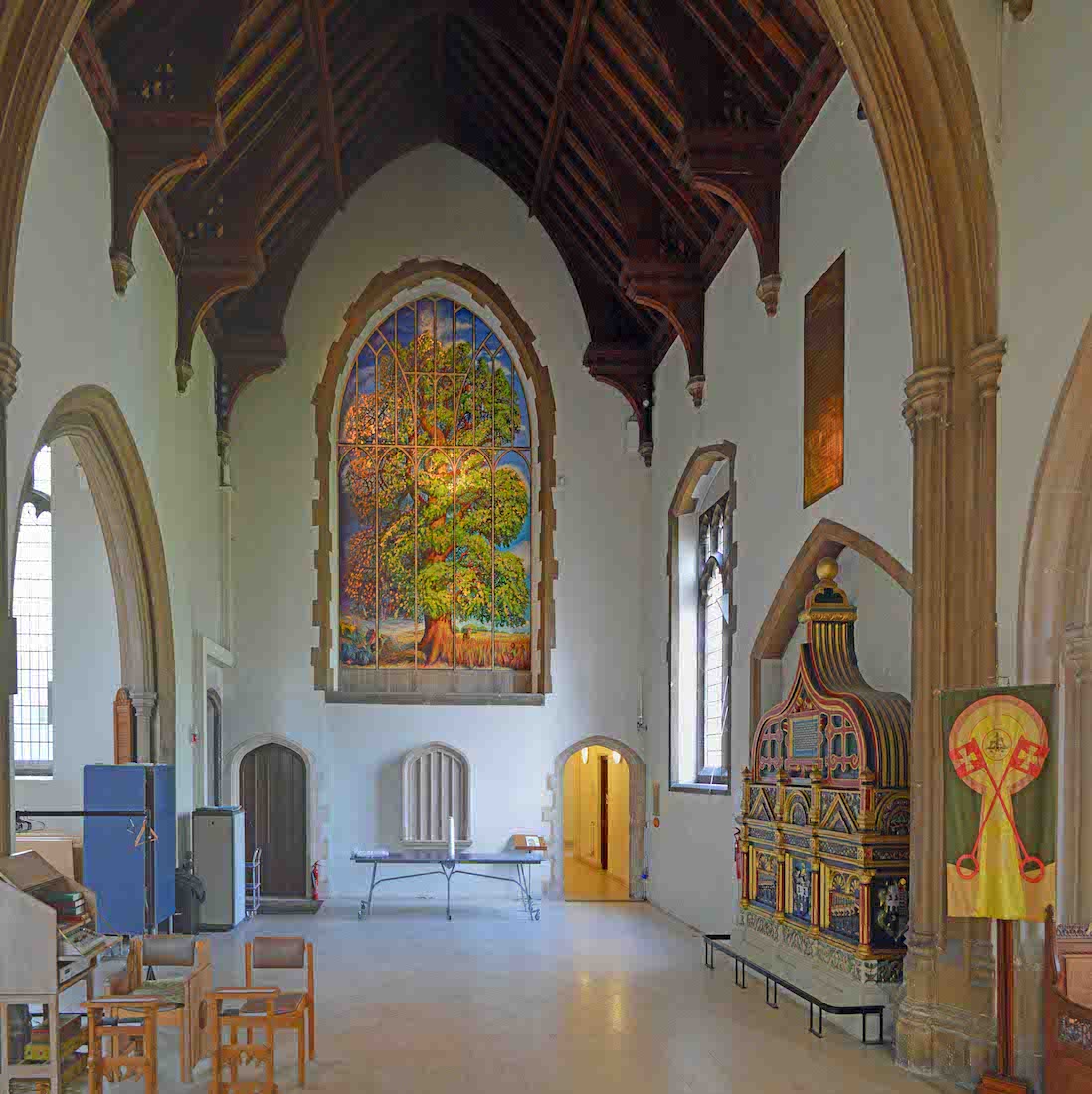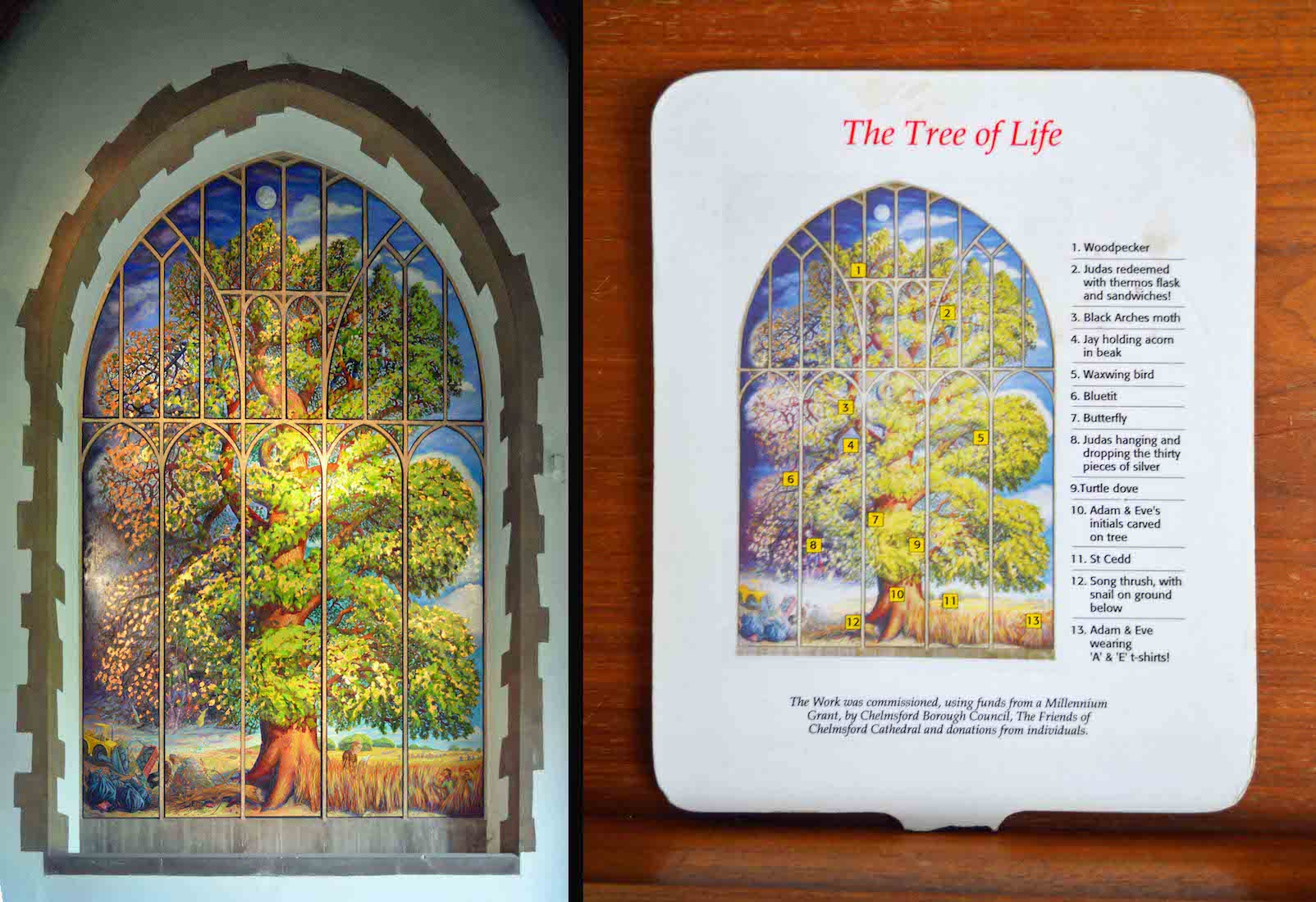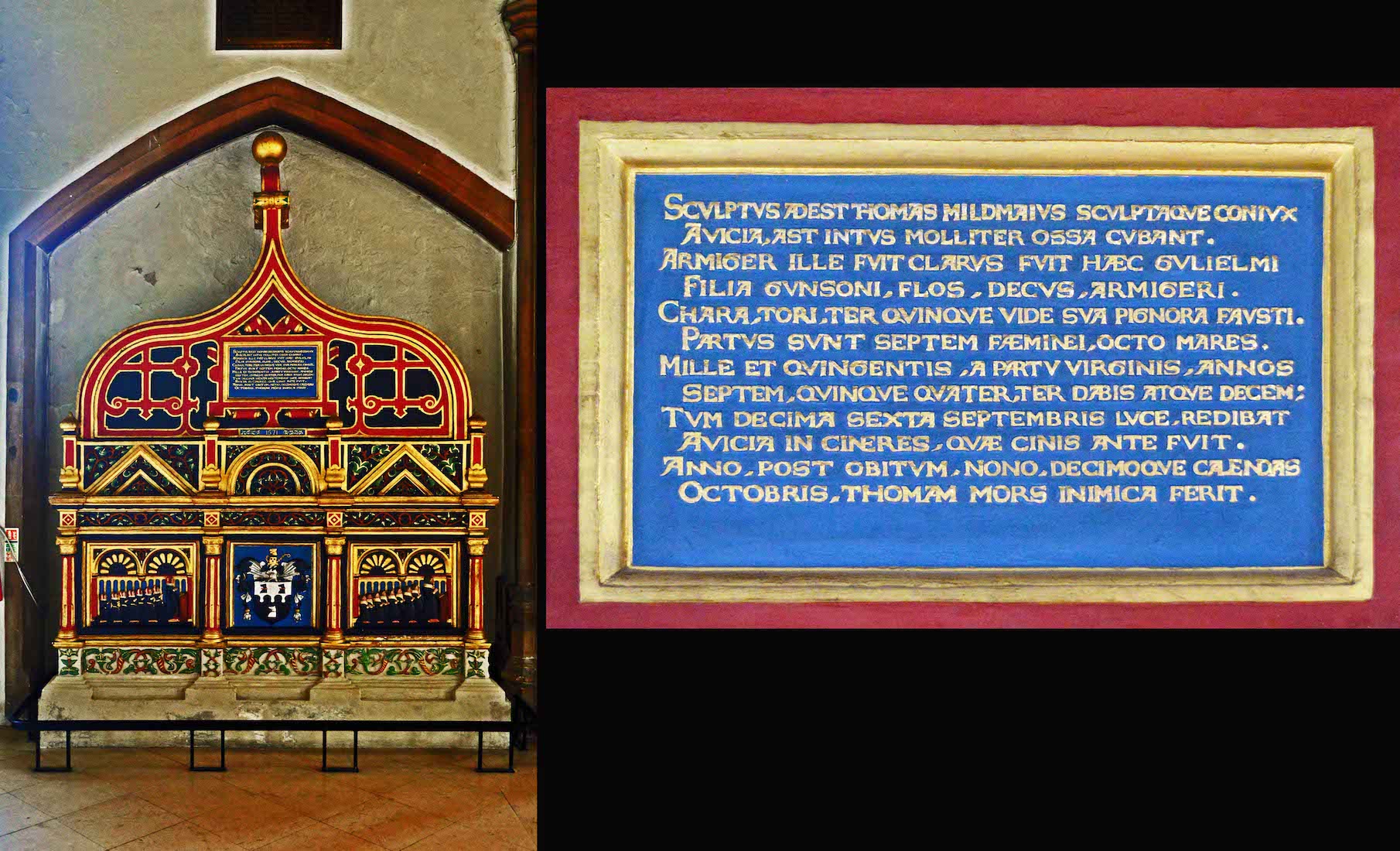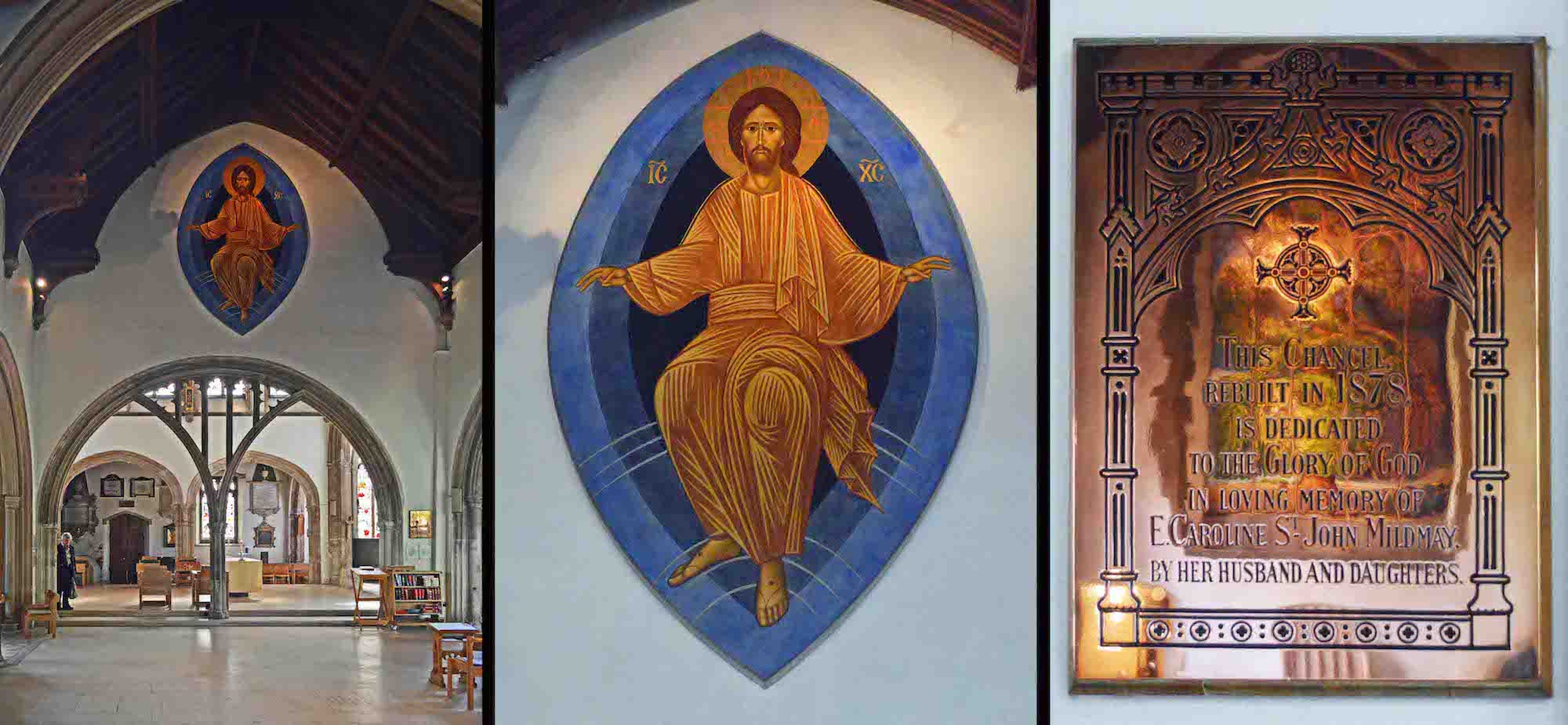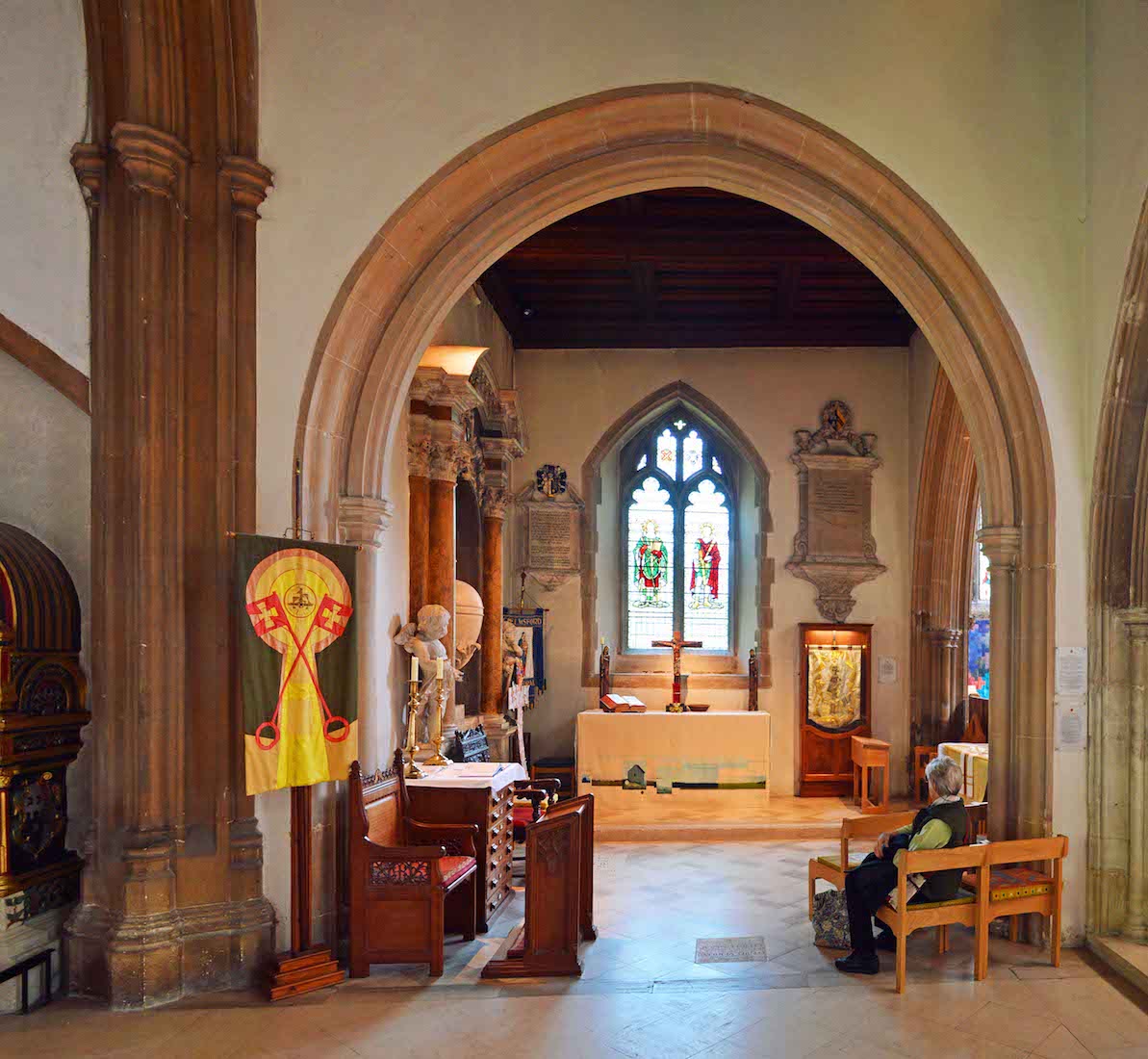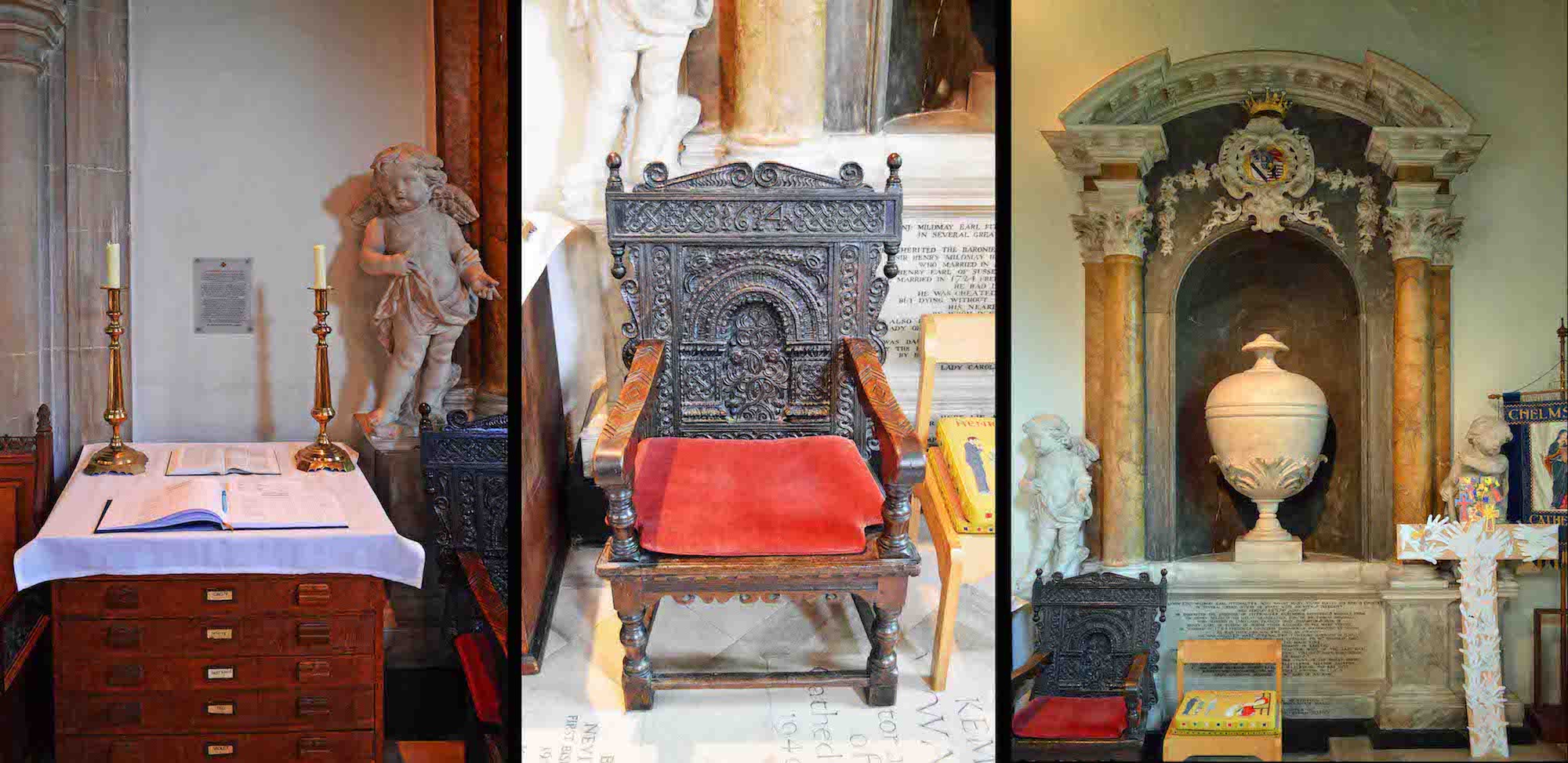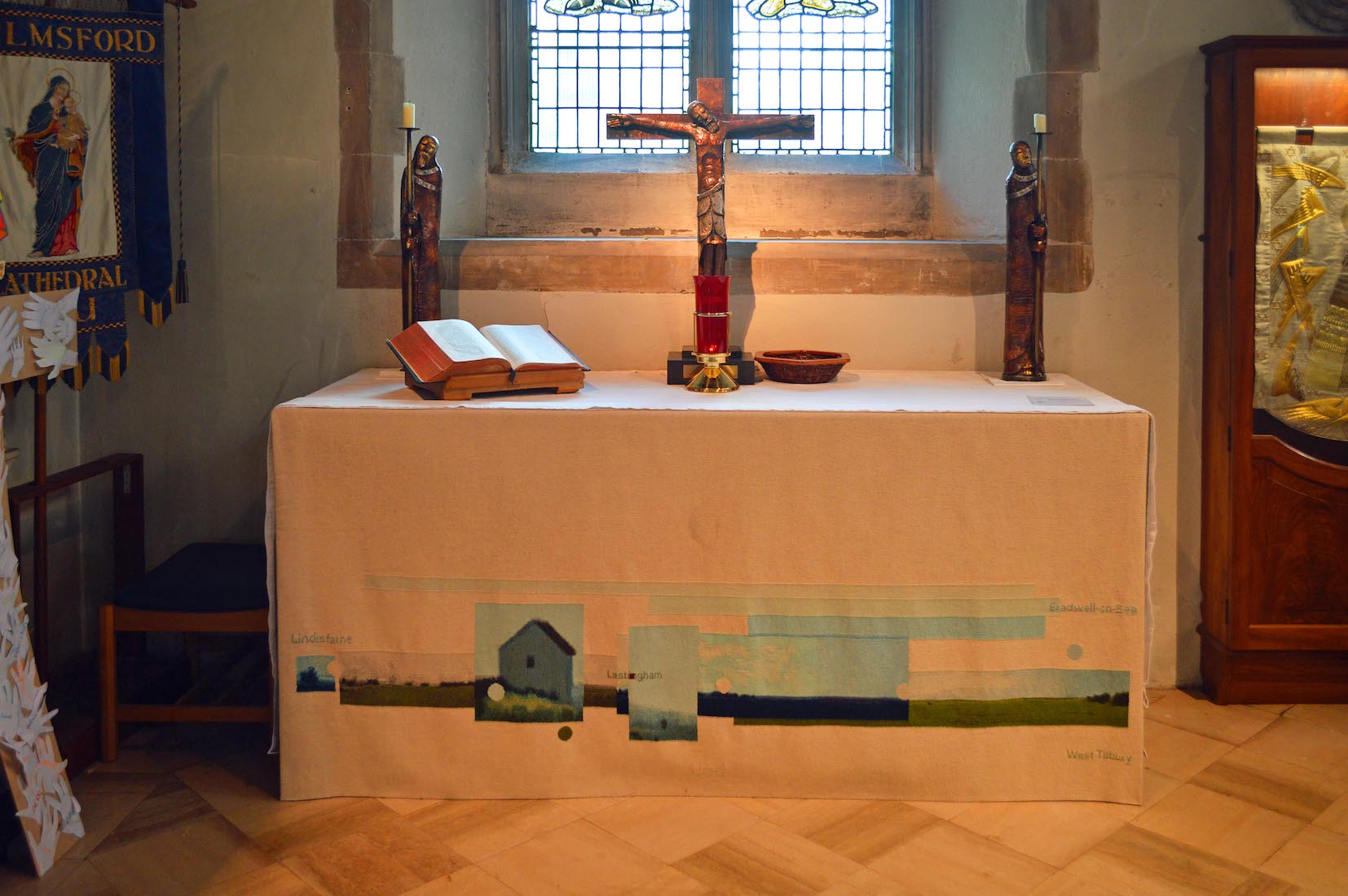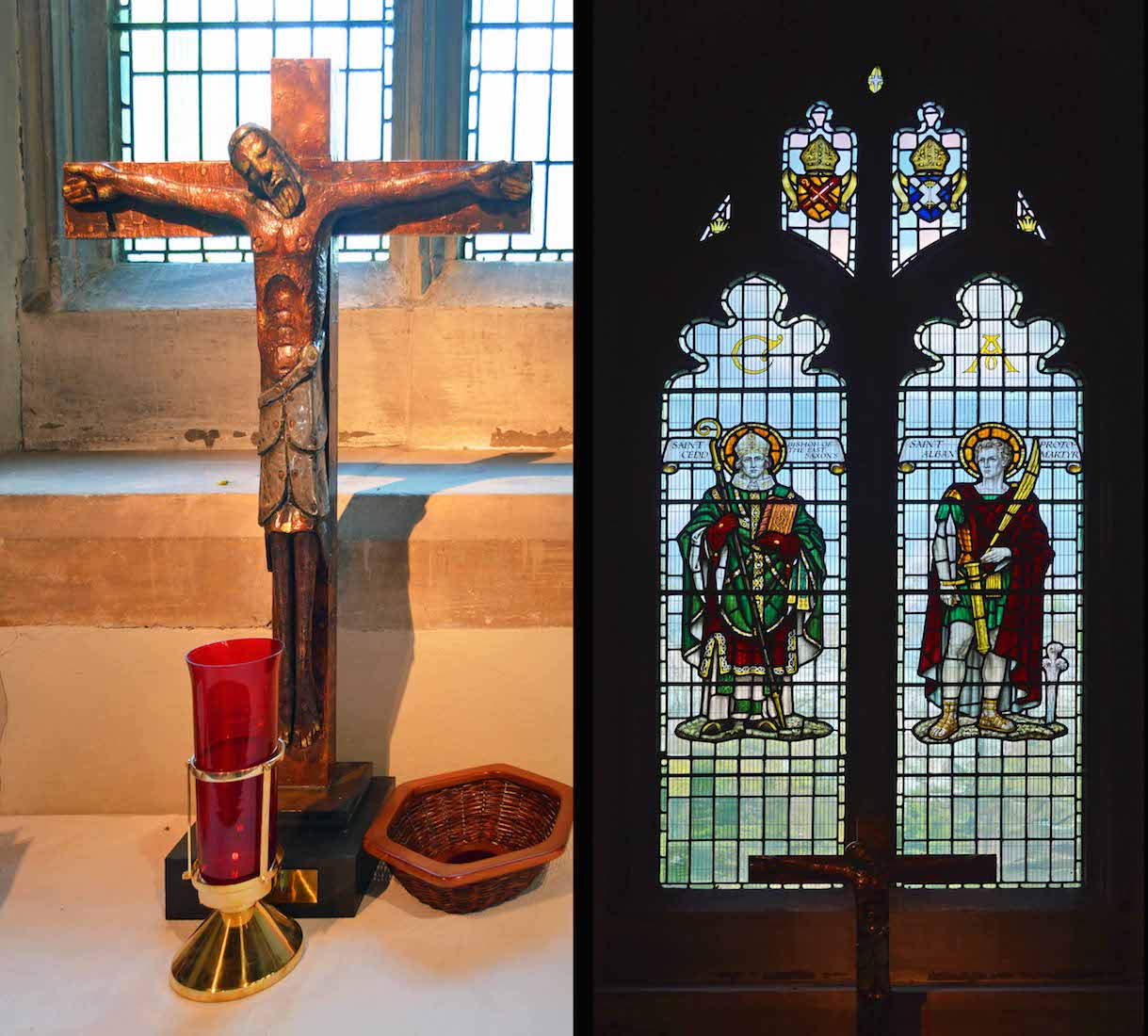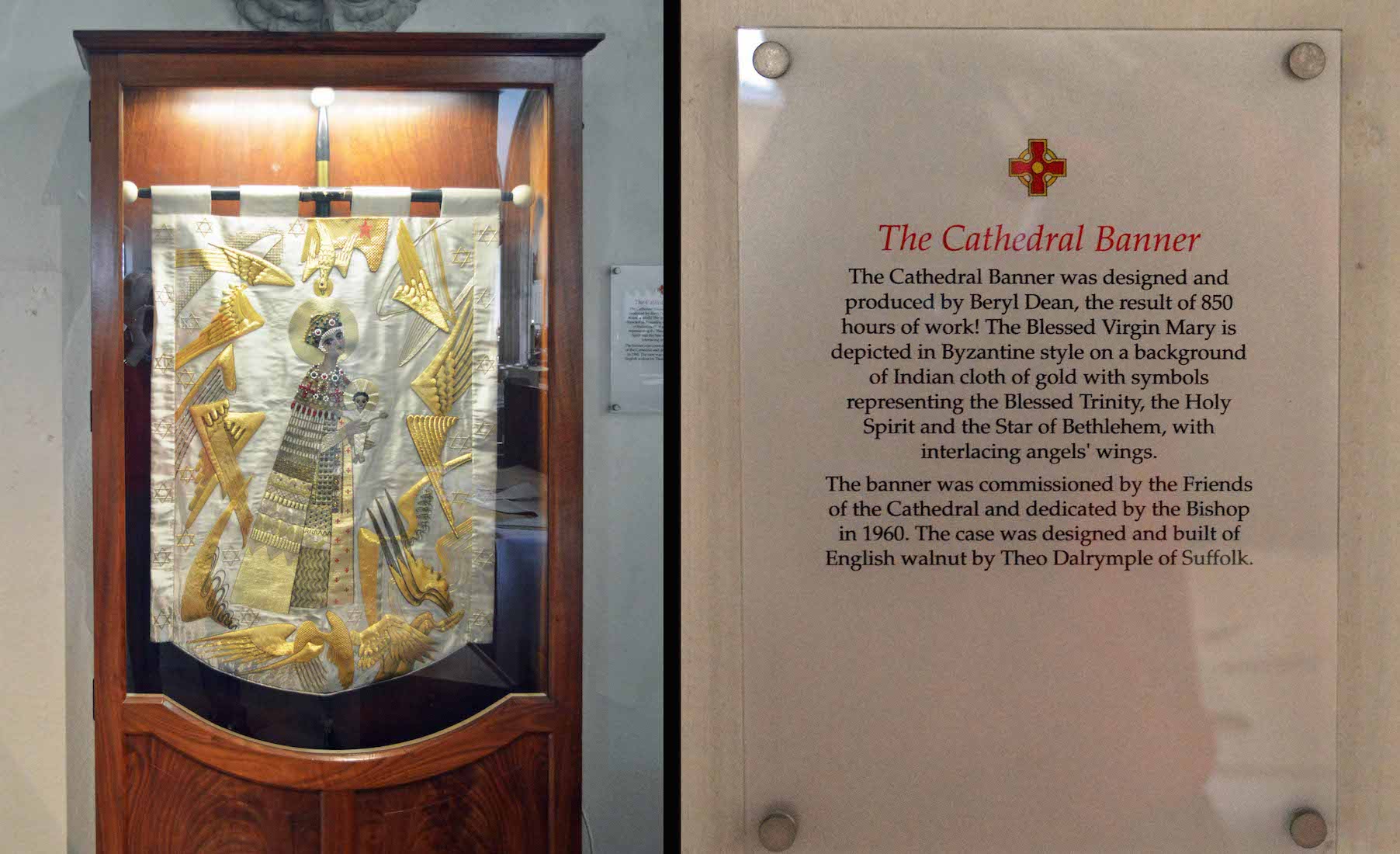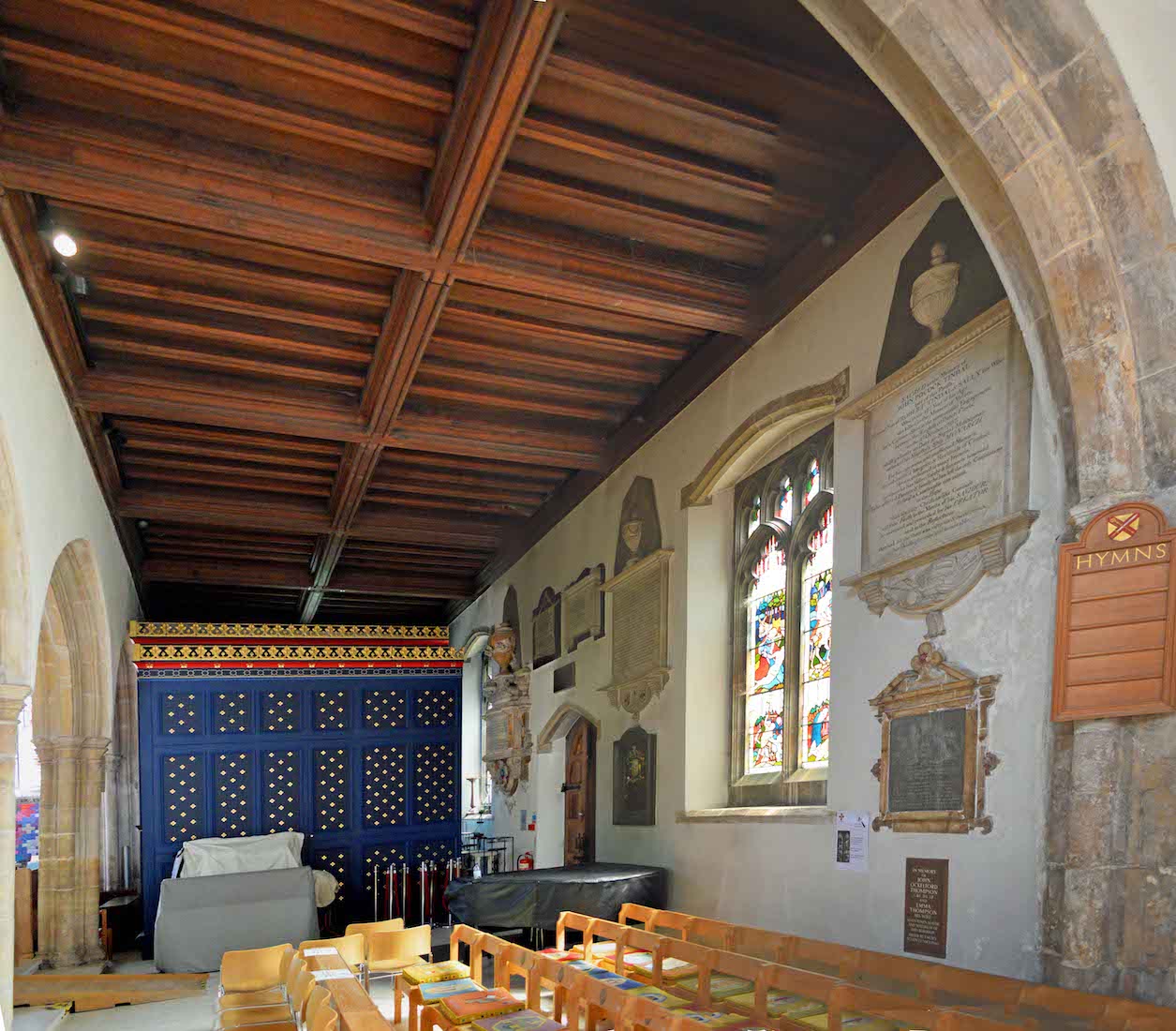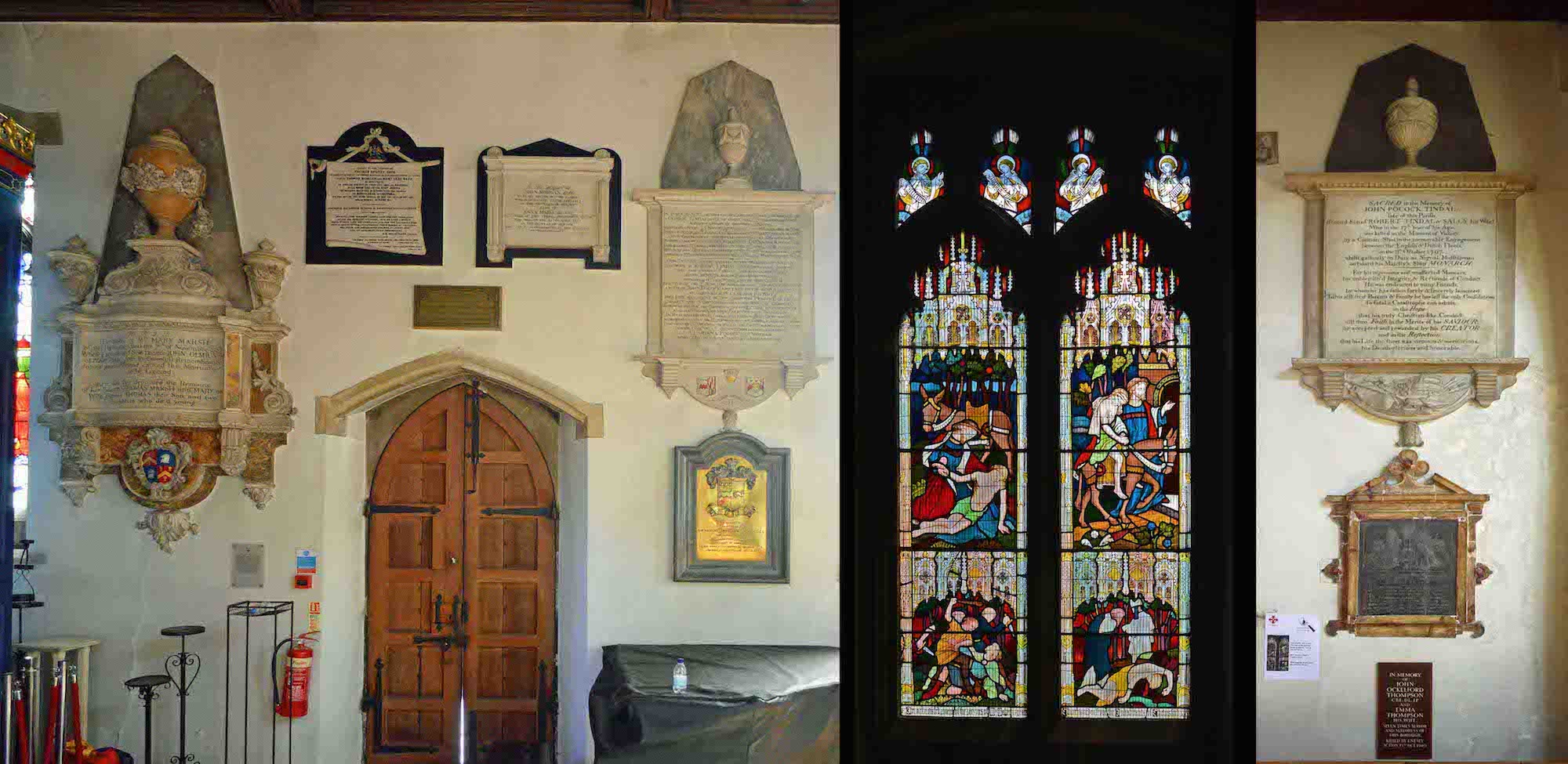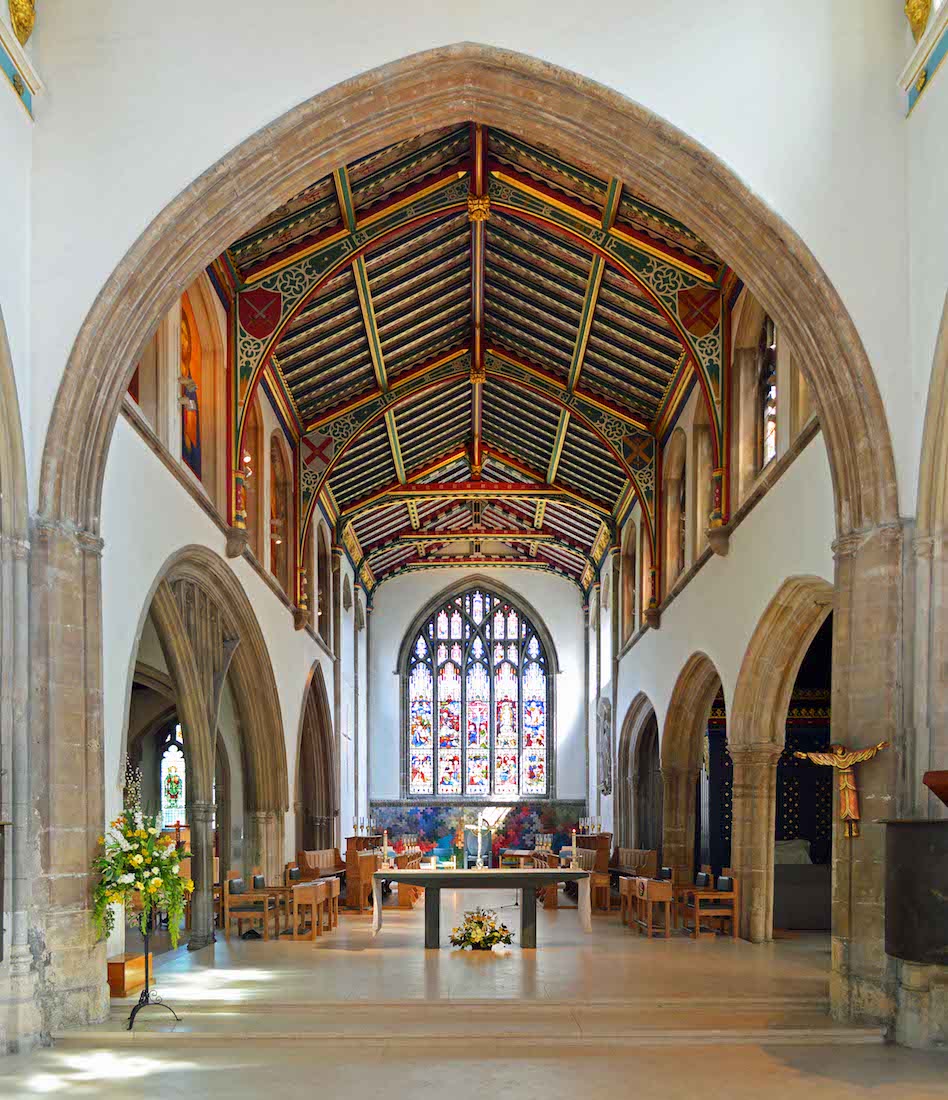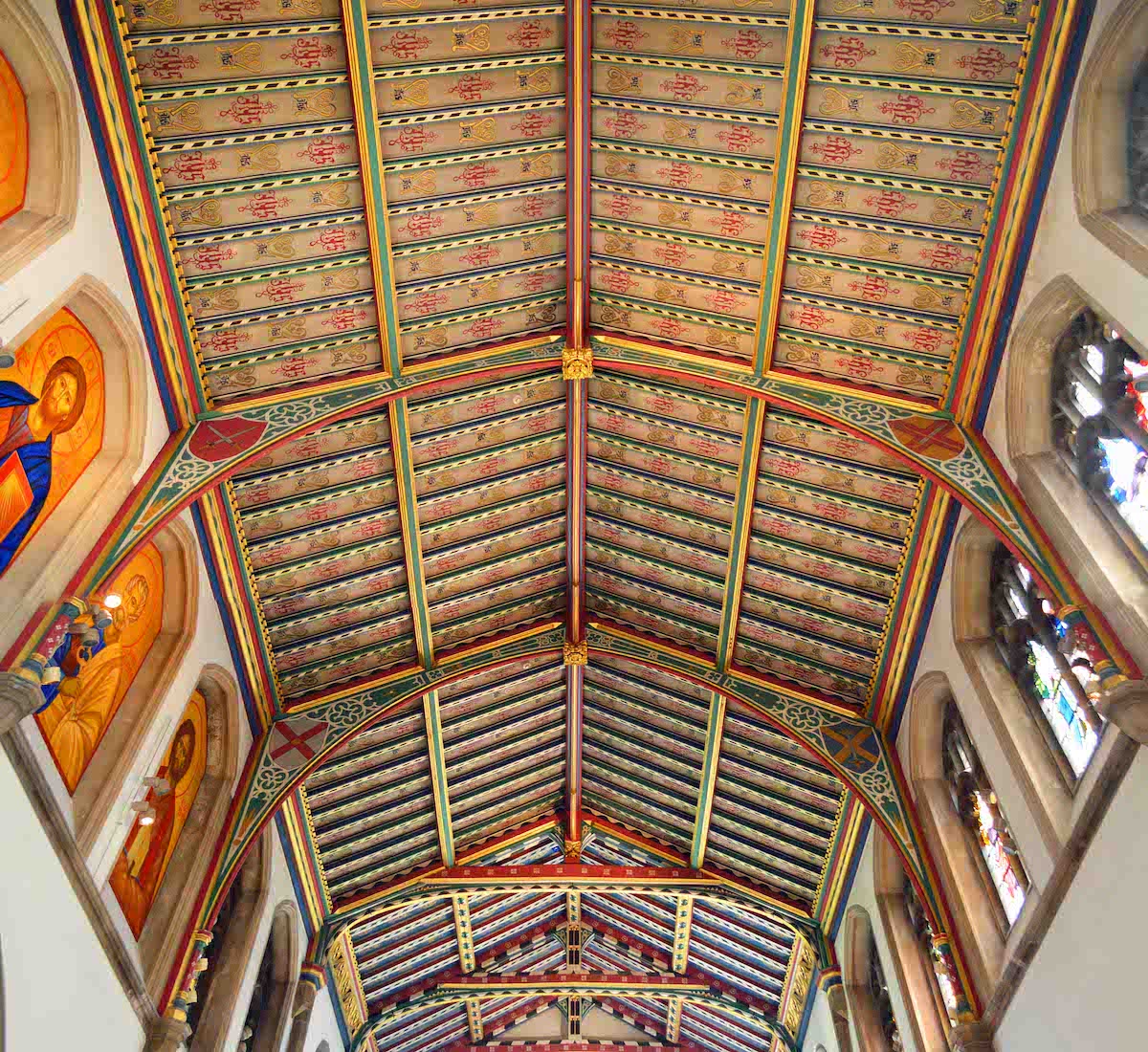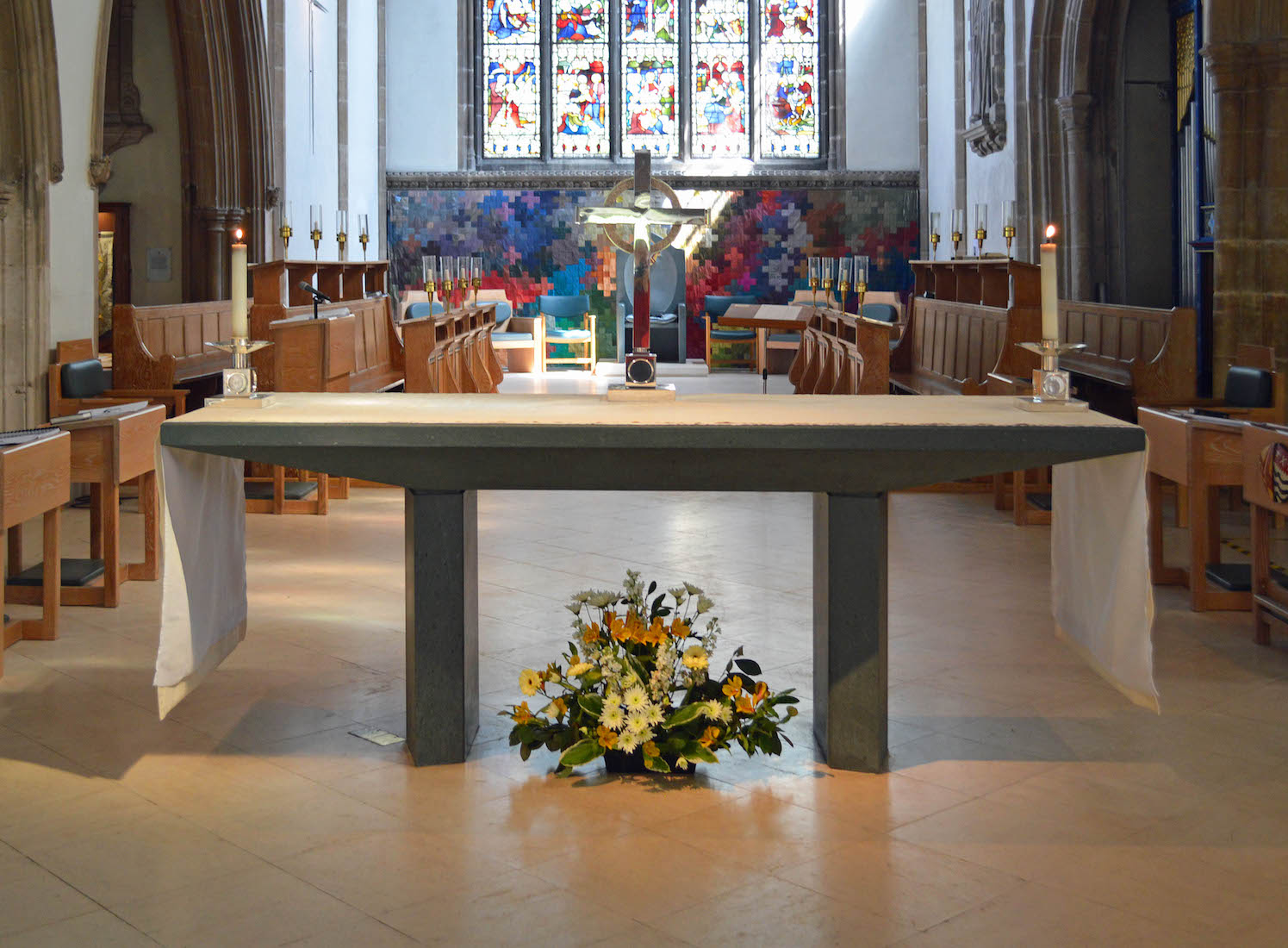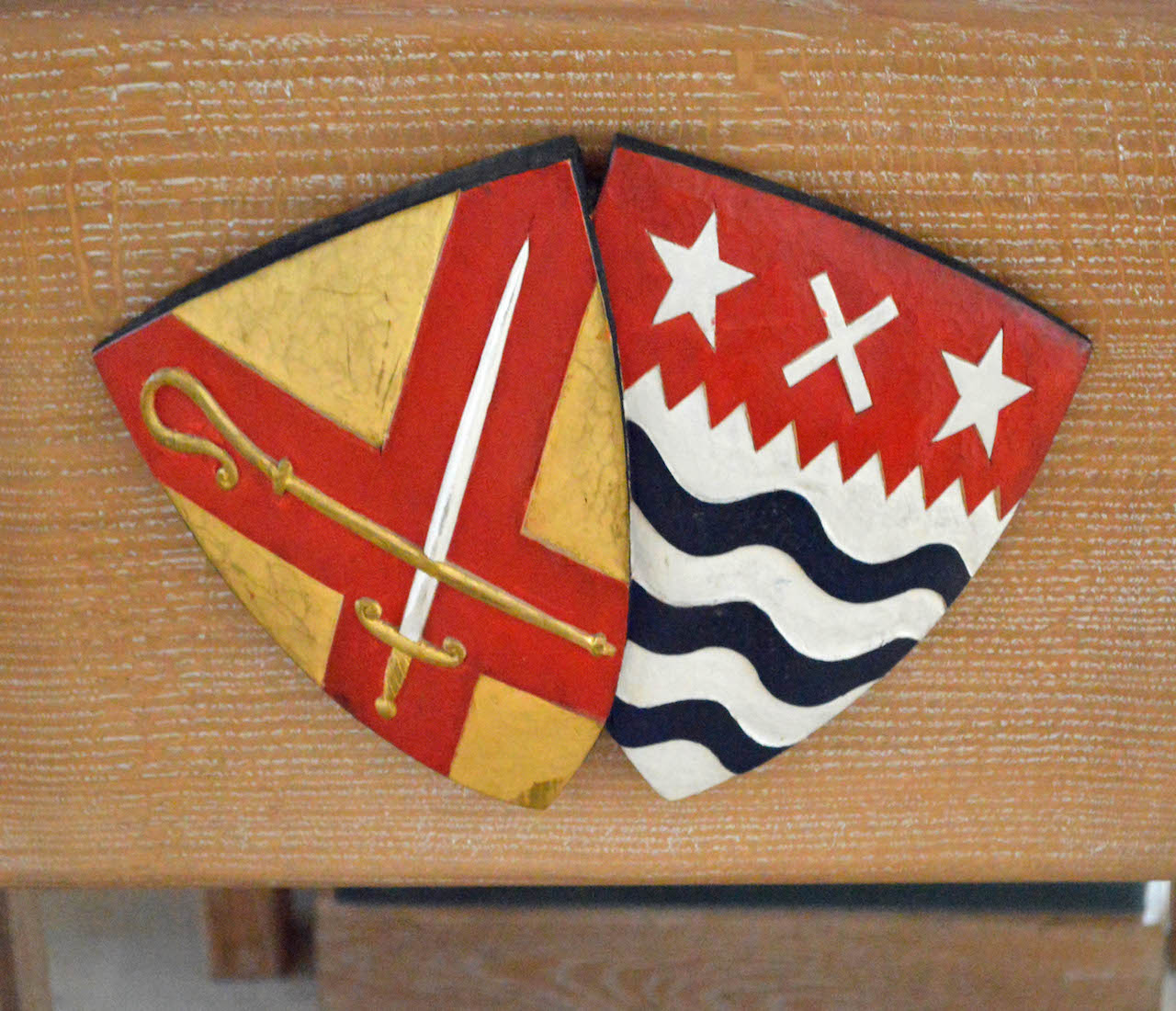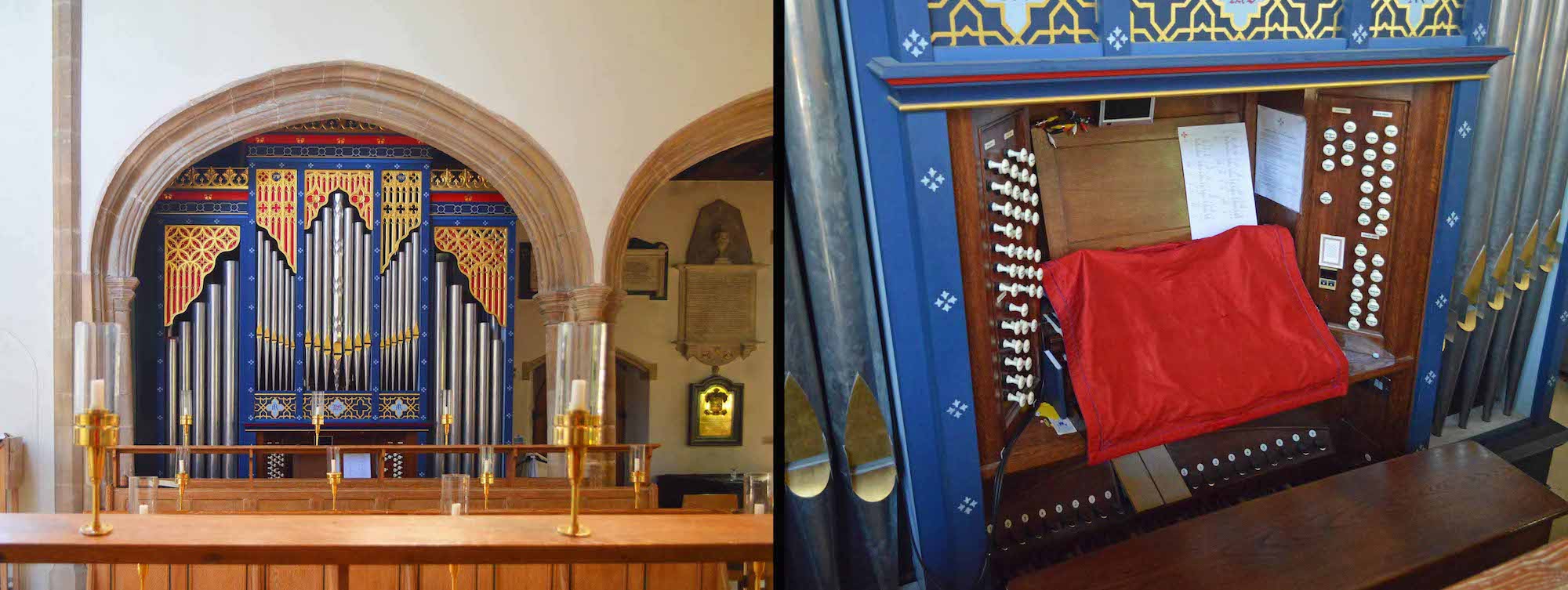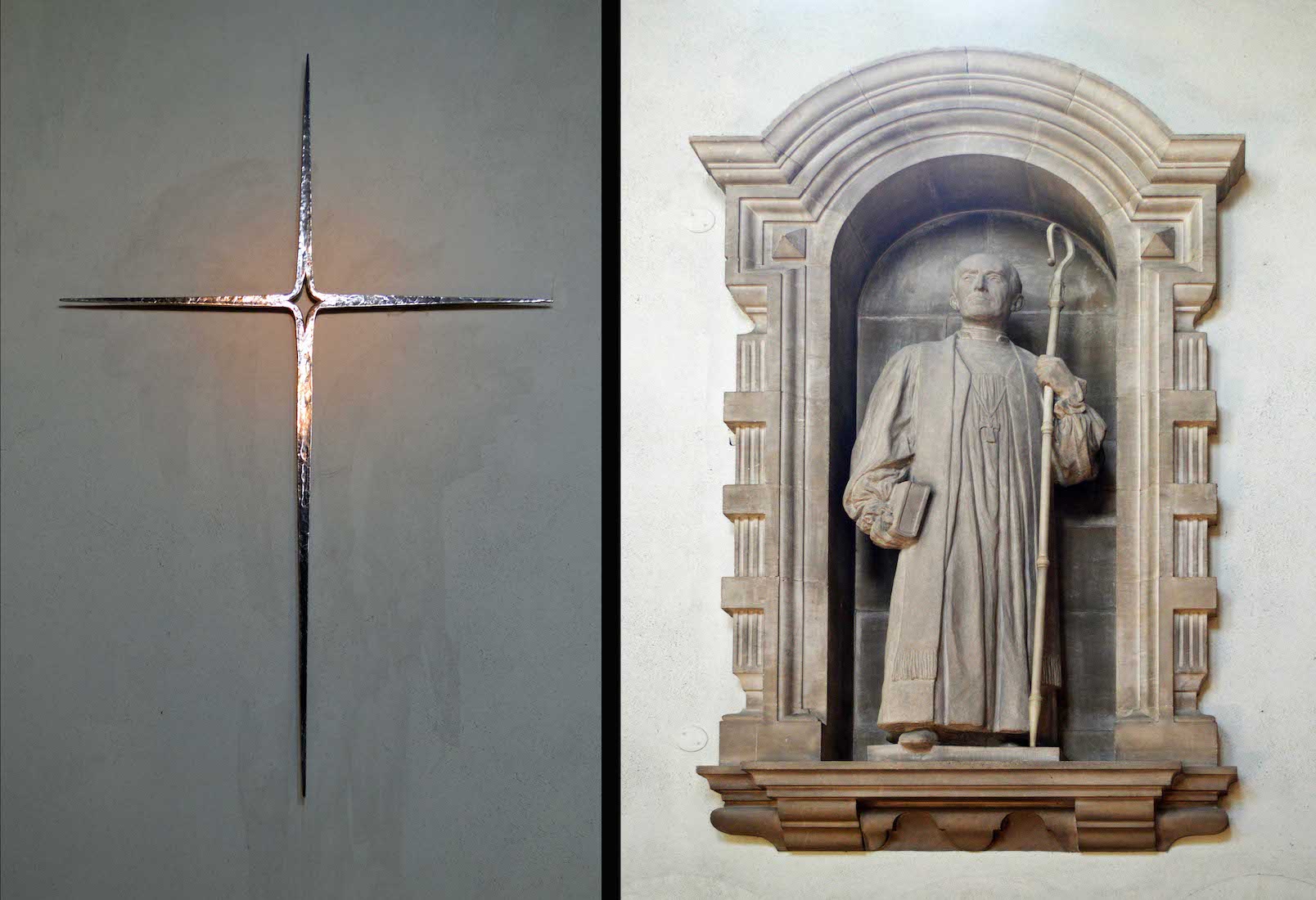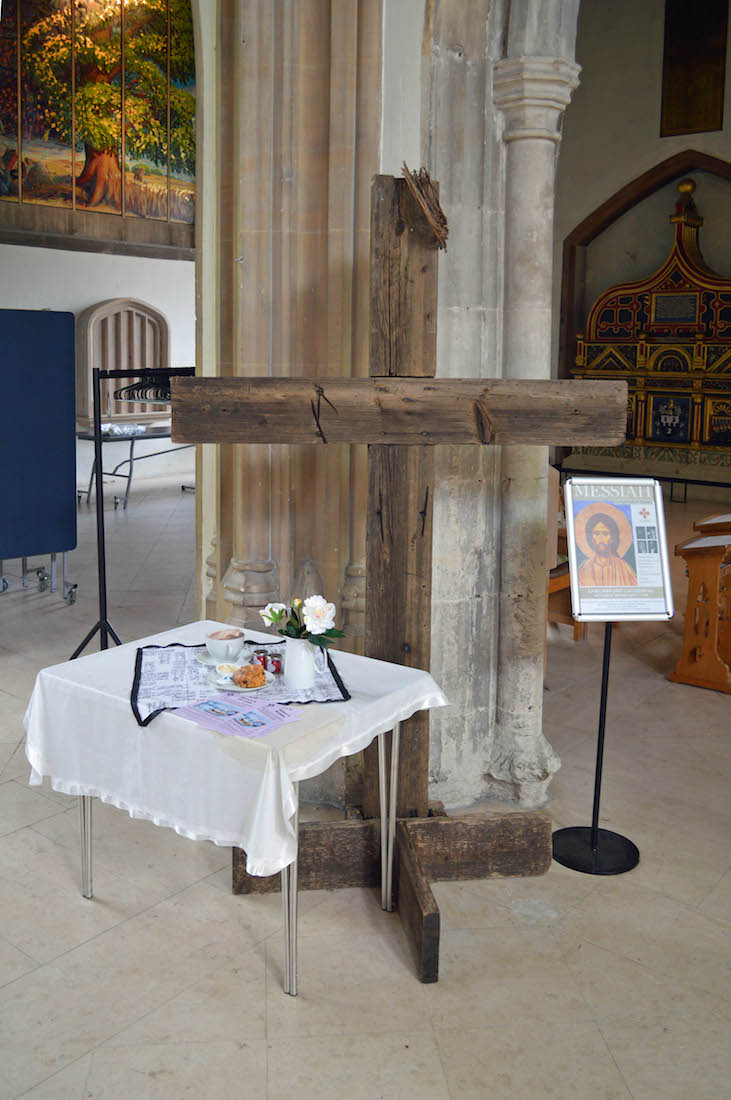
This rough hewn wooden cross reminds us that the cruel Cross on which Christ was crucified was not made of gold and decorated with precious stones. I am intrigued with the altar offering: coffee and scone with jam and cream? PLAN
42. CROSSING
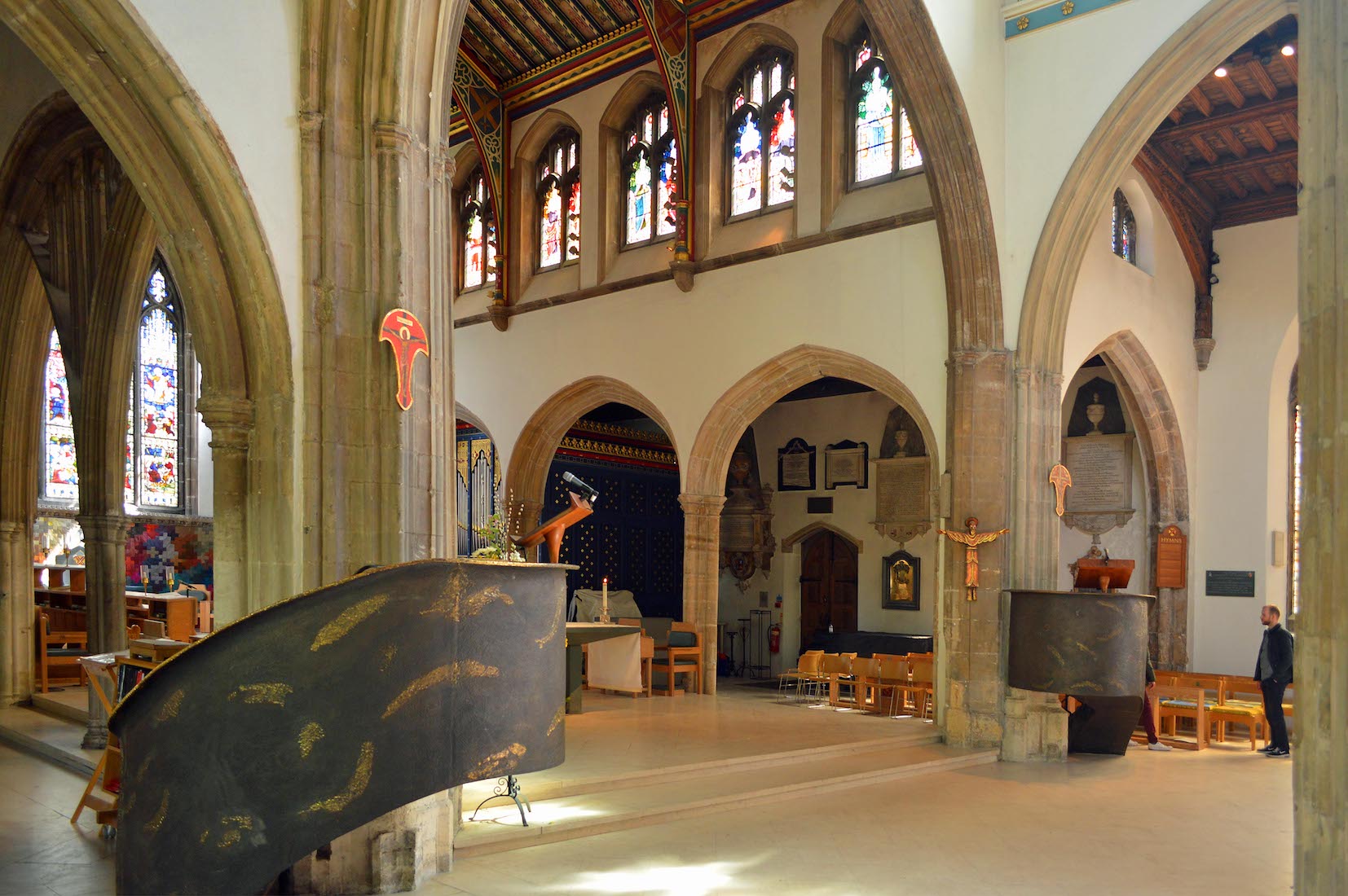
This view shows us two unusual steel and bronze ambos constructed of curved sheet metal and plainly painted. These were made by Giuseppe Lund. Notice too the three ornate items hanging on the columns. Beyond we see the high Holy Spirit window, and the so called South transept. (The term ‘crossing‘ is not quite accurate because of the absence of a true South transept, but it is useful here.)
43. ICONS AND CHRIST FIGURE
Above each of the ambos is an icon-style cross by Sister Petra Clare: ‘Jesus of Nazareth’ and ‘The Cross of the Seven Doves’, representing the seven gifts of the Spirit. A smaller ‘Christus Rex’ is attached to the South crossing column.
45. THE TREE OF LIFE
The Tree of Life is a painting by Mark Cazalet (2004). It fills what had been a blank window since the addition of the vestry block. Thirty-five birch wood panels fit the original tracery. It is a challenge to the environmental issues of our time and our stewardship of creation. Judas hangs as a skeleton dropping 30 pieces of silver at bottom left, but he sits redeemed at top right. St Cedd sits under the tree, and Adam and Eve are in the bottom right corner. There are five birds, a moth, and a butterfly to find. .
46. MILDMAY MONUMENT
The monument remembers Thomas Mildmay who lived in the 16th century, also his wife Avicia and their family. Part of the Latin epitaph above the kneeling effigies reads: ‘He was a renowned esquire, she a daughter and lovely branch of William Gunson Esq, and they had fifteen pledges of their prosperous love: seven whereof were females, eight were males’.
47. BACK OF NORTH TRANSEPT ARCH
If we stand in the North transept and look back to the chancel we see a large figure of Christ in an almond shaped frame, and a brass plaque to the right. ‘The Ascended Christ’ was created by the same icon writers who made the icons in the chancel. It is in the frame of a mandorla (Italian for almond) which is a shape reserved for a figure in glory. The text on the plaque reads: ‘This Chancel, rebuilt in 1878, is dedicated to the Glory of God in loving memory of E Caroline St John Mildmay, by her husband and daughters.’
48. MILDMAY CHAPEL
The Mildmay Chapel leads off the North transept. It is full of interesting items! The banner on the left with its twin keys is a tribute to St Peter, one of the saints to whom the Cathedral is dedicated. And the small plaque on the floor remembers Albert John Trillo who was a Church of England bishop. John Trillo became the Bishop of Hertford in 1968 and the Bishop of Chelmsford in 1971.
49. MILDMAY CHAPEL: REGISTER, CHAIR, MEMORIAL
These items are to be found along the North wall of the chapel. On the desk is a register, and behind on the wall is information about the chapel altar frontal. The ornate wooden chair has the date 1614 as part of the carving on the back. The elaborate memorial remembers Benjamin Mildmay, 1st Earl FitzWalter PC (1672 – 1756), styled ‘The Honourable Benjamin Mildmay’ until 1728 and known as ‘The Lord FitzWalter’ between 1728 and 1730. He was a British politician who served as First Lord of Trade between 1735 and 1737 and as Treasurer of the Household between 1737 and 1755.
50. CHAPEL ALTAR
The Mildmay Chapel altar frontal was designed and made by Philip Sanderson. Based on photographs of St Peter’s Chapel, Bradwell, it took 1000 hours of hand weaving, and marks significant moments in the life of St Cedd who founded the chapel in 654 AD. The tapestry is a serene and contemplative work.
51. CRUCIFIX AND WINDOW
On the chapel altar stand a carved crucifix and pair of candlesticks, created by Peter Ball. The window depicts saints from the East of England. At left we see St Cedd, Bishop of the East Saxons who arrived in Bradwell in 654 AD. At right is the figure of St Alban, the first English martyr.
52. CATHEDRAL BANNER
The Cathedral banner was embroidered by Beryl Dean in 1956. It took 800 hours to make. The Blessed Virgin Mary is depicted in Byzantine style, and the symbols are the Blessed Trinity, the Holy Spirit, and the Star of David with interlacing angels’ wings.
53. ‘SOUTH TRANSEPT’
We leave the Mildmay Chapel and cross to the South side of the Cathedral to the East continuation of the South aisle. Formerly, the aisle ran into the medieval chapel of the Corpus Christi Guild. The chapel is now occupied by the chancel organ, and the stalls of the College of Canons. Each cushion is embroidered with a representation of a saint or historical figure associated with Essex.
54. SOUTH WALL OF TRANSEPT
This wall is covered with an array of memorials. The doorway was the ‘yielde door’, leading to the churchyard. The stained glass window depicts scenes from the parable of the Good Samaritan. It was produced by Clayton and Bell in 1863. A further ‘Charity and Mercy’ window at left has unfortunately been obscured by the chancel organ.
55. CHANCEL
We come now to the chancel with the sanctuary beyond, and the colourful roof above. The gilding and painting of the chancel roof with its strong ‘medieval’ colours were carried out in 1957 with the financial assistance of the Friends of the Cathedral. At centre is the nave altar, and beyond, the great East window with a colourful wall pattern below.
56. CHANCEL ROOF
The roofs of chancel and sanctuary are a delight. The trusses at left and right feature the arms of the Chelmsford diocese and the three other dioceses to which the Church formerly belonged. On the other side are the arms of the Borough of Chelmsford, the County of Essex, the Bouchier and de Vere families which were prominent in Essex in the 15th century, the Mildmay family, and Westminster Abbey.
57. NAVE ALTAR
This is the only central altar in the Cathedral, and it is from here that the Eucharist is administered Sunday by Sunday. On either side are the Dean’s chair and desk (there is a glimpse of colour at extreme right) and other chairs for officiating people, and beyond we can see on either side the choir stalls, with their little lamps.
58. TWO SHIELDS
On the front of the Dean’s desk are two shields. The shield at left represents the Diocese of Chelmsford, the one at right, the Borough of Chelmsford.
59. CHANCEL ORGAN
The chancel organ, South of the chancel, is primarily designed to accompany the choir, but can be linked to the nave organ using the chancel console. The instrument that now stands behind the choir stalls is based on the pipework by Holdich and Hill from the church of St Andrew the Great in Cambridge. The console has three manuals. Both organs are regularly used to provide and enhance the music in the Cathedral.
60. CROSS AND STATUE
As we approach the sanctuary, there is a cross to our left, and a statue to our right. The stainless steel cross is by Giuseppe Lund, and was originally intended to hang in the chancel arch. The statue is of Bishop John Watts-Ditchfield (1861 – 1923) who was an eminent 20th century Anglican priest and distinguished author. He was in turn: Curate at St Peter Highgate; Vicar of St James-the-Less, Bethnal Green; Lecturer in Pastoral Theology at Cambridge University; and the inaugural Bishop of Chelmsford, dying in this post.


